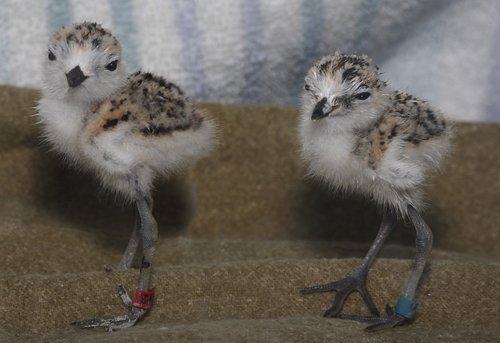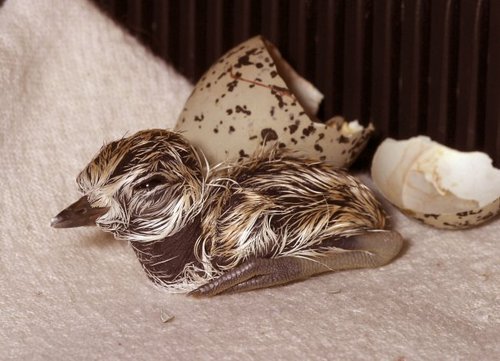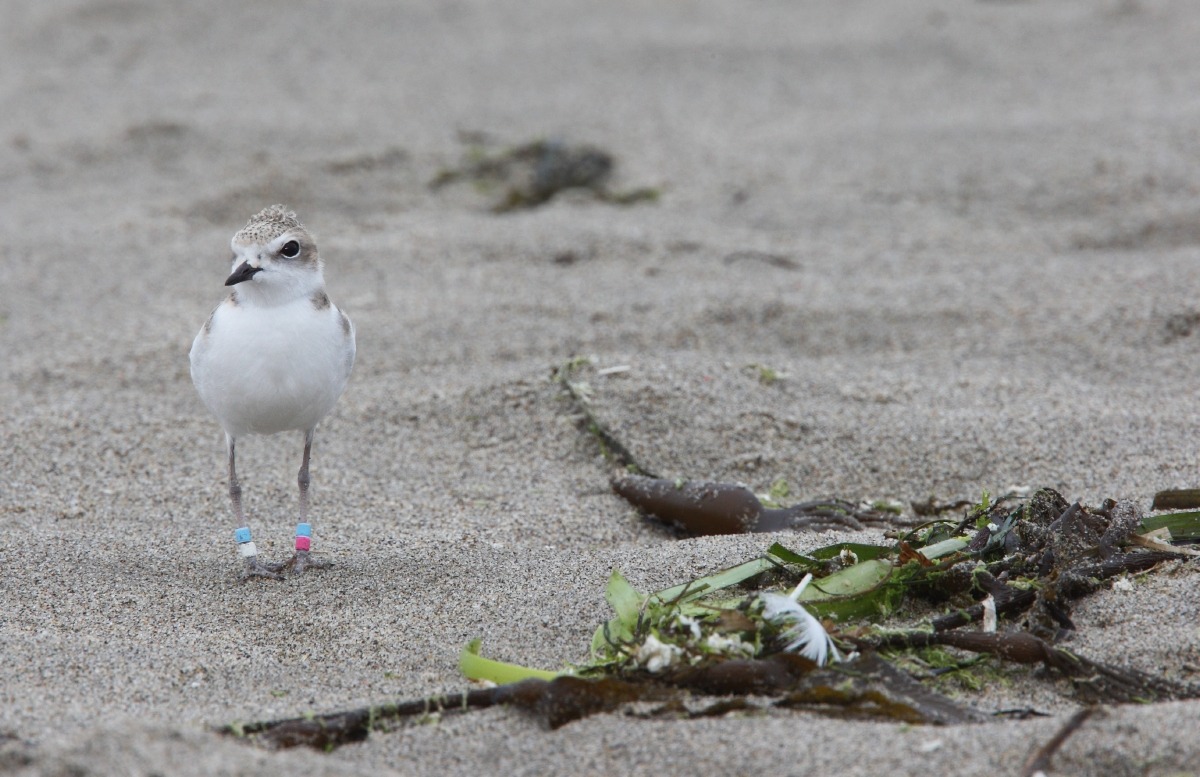Saving Snowy Plovers

By Anne-Marie Alden
Each year from March through September, tiny snowy plover chicks appear on beaches along California’s coast, looking like balls of fluff with two stick legs. “We call them cotton balls on Q-tips,” says one Aquarist. These small shorebirds are also in trouble.
Once numbering in the thousands, U.S. Pacific coast western snowy plovers were listed as threatened under the Endangered Species Act in 1993. Today it’s estimated that only about 2,100 plovers breed along the coast, with the largest number found from south San Francisco Bay to southern Baja California.
Loss of the plovers’ preferred habitat, sandy beaches, is largely responsible for the population’s shrinking numbers, but the design of their nests also makes them vulnerable. The birds make their homes in shallow depressions in the sand—sometimes using human footprints, in areas where people walk. And they’re mostly invisible. Adult snowy plovers have bright white stomachs, but their top halves are perfectly sand colored.

A Site for Shore Eyes
Males and females take turns sitting on the nests, but when people or animals approach, the adult plover will flee in fright and may not return for hours, leaving its eggs to be crushed, overheated in the sun or eaten by a sharp-eyed predator.
Fortunately, there are lots of friendly eyes watching the nests as well. As part of the U.S. Fish and Wildlife Service’s Snowy Plover Recovery Plan biologists, California State Park employees and volunteers fence off fragile areas during breeding season to keep people and predators out, and monitor snowy plover nests.

The Aquarium Helps Out
Birds in distress and eggs that have been abandoned are often brought to the Monterey Bay Aquarium—one of the main rehabilitation sites for shorebirds in northern California. Here, sick and injured birds are treated and eggs are transferred to an incubator.
If all goes well, an egg will hatch about 35 days after it’s laid. Hatching takes about 24 hours, but can take two days.
Newly hatched chicks are paired with the female snowy plover from the Aquarium’s Sandy Shore Aviary exhibit. In the wild, males spend time with the chicks and the females mate again, but our male isn’t comfortable with chicks, so the female keeps them company.
Our goal is to release the chicks to the wild, but the baby birds can’t fly the coop until they satisfy a lengthy checklist, including wariness of humans, a minimum weight of 30 grams (adults weigh about 57 grams and are 6-7 inches long), the ability to fly, and the savvy to find food on their own. A healthy chick can be ready for release after about a month.
Prospering Plovers
Since the Aquarium’s plover recovery program began in 2000, dozens of chicks have been raised, including many from eggs. And dozens have been banded and released from the Aquarium.
The released birds are tracked and the aviculture staff is alerted when Aquarium-released birds have been sighted, which proves the system is working.
What You Can Do
Help keep adult plovers from abandoning their nests. Keep your dog on a leash on beaches during snowy plover breeding season and stay out of areas that have been blocked off as bird nesting sights.
(You can see snowy plovers and other shorebirds on exhibit at the Monterey Bay Aquarium on our live aviary web cam.)






